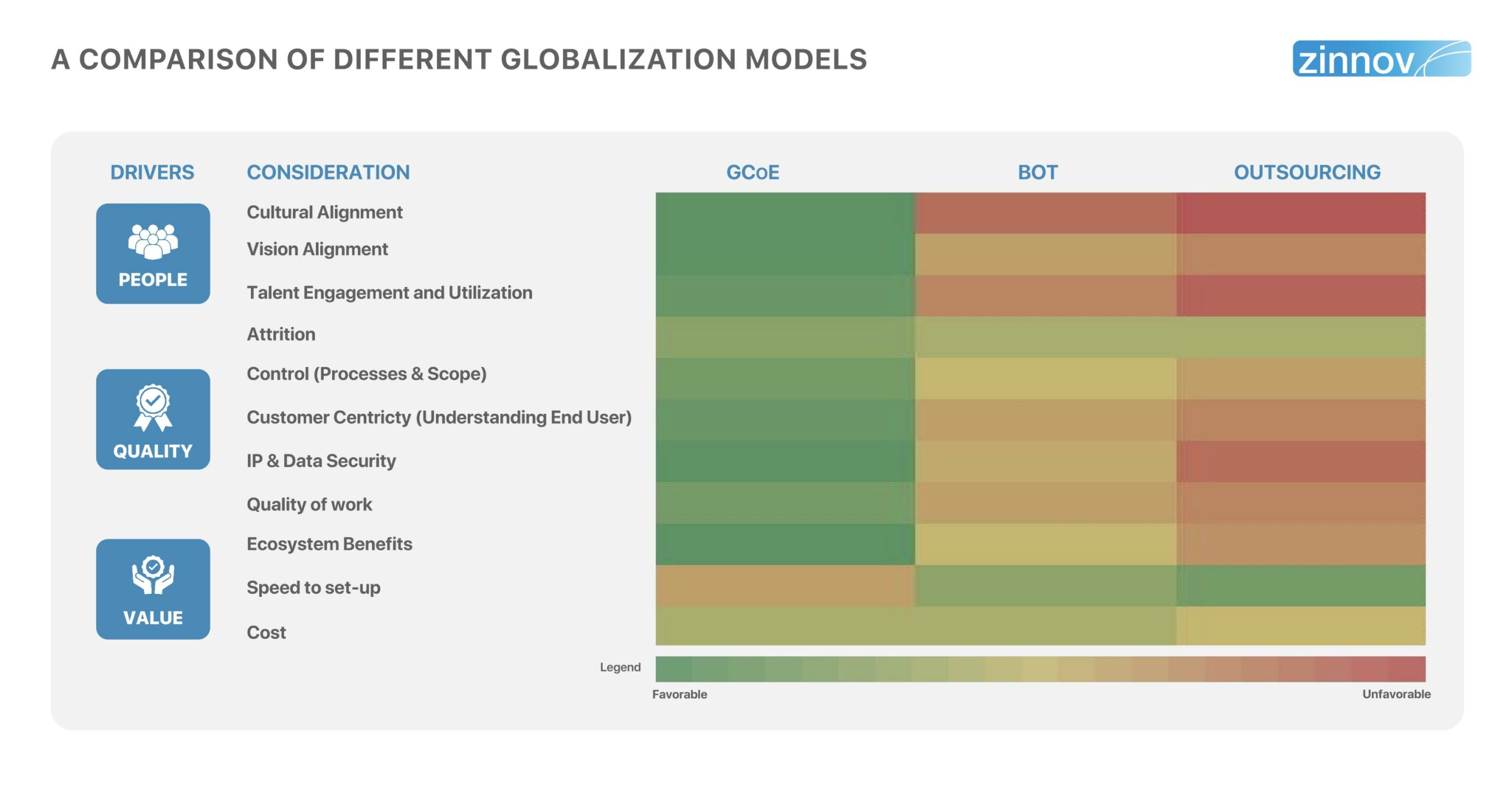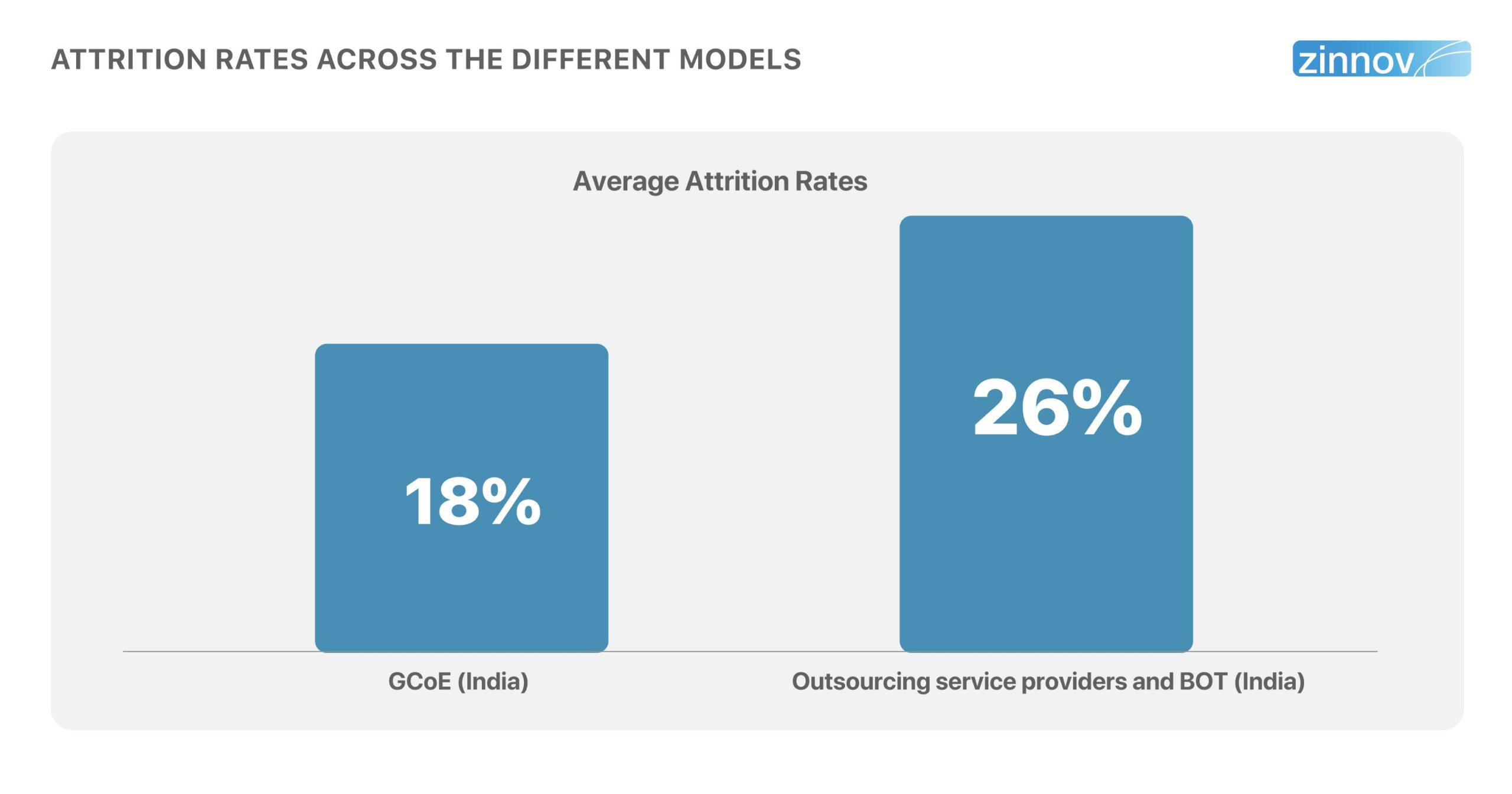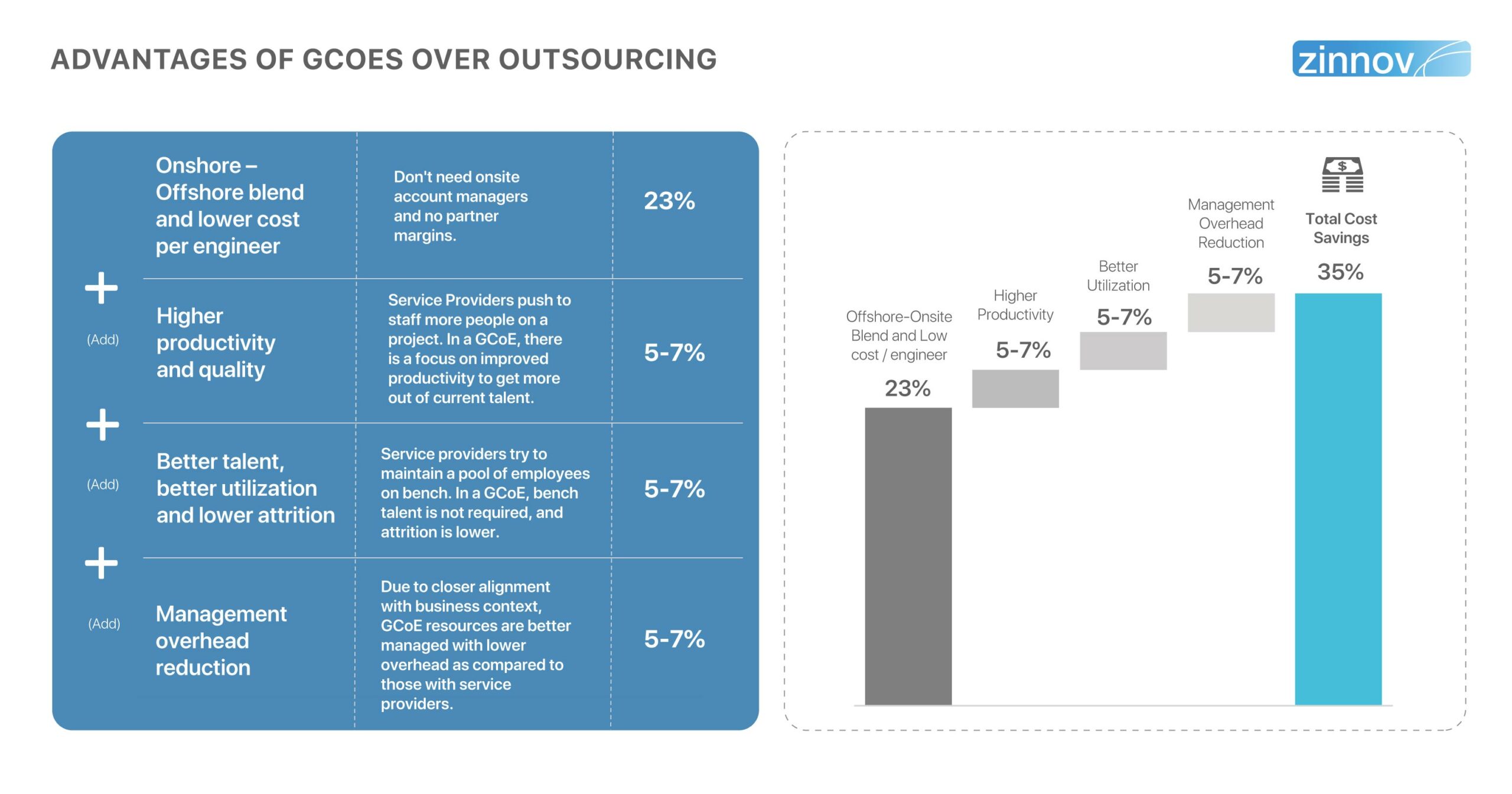|
|
Global companies are increasingly availing global talent hotspots to meet the accelerated speed as well as scale of digitalization. However, companies are facing huge problems in attracting and retaining top talent, hindering productivity and business continuity. To avail global talent companies have following options to choose from:
Own employees’ model –
*A GCoE, also known as a Global Capability Center (GCC), Global In-house Center (GIC), Captive Center, offshore development center, or an insourced team.
Partner’s employees’ models-
Global companies sometimes go after partner-driven models with a flawed perception that they are ‘less risky’ and ‘hassle-free’ as the partner would provide their team. The perception is that this partner’s team will drive the value the company is hoping for.
The irony is it is a partner’s team, and hence the employees are driven by the partner’s culture, and productivity levels are often not at par with the company’s expectations.
Moreover, companies often confuse ‘insourcing’ with ‘transferring the team in BOT model.’ We would like to emphasize that the ‘transfer’ part of the BOT model does not mean the same as the ‘insourcing’ of teams. Insourcing implies hiring your own teams from scratch when doing away with an outsourcing model, while ‘transfer’ in BOT means transferring the responsibility of team building to the BOT partner.
The BOT transferred team comes with the baggage of –
A team transferred with the above baggage has a very low probability to be a long-term asset to drive value for the company. Hence the perception of ‘risk-free’ and ‘hassle-free’ is completely misleading.
We are observing that MNCs looking for long-term value through global talent are choosing the Global Center of Excellence (GCoE) and Insourcing models as a go-to preference, rather than BOT or outsourcing models.
“We at Tesco want the people that work on our problems to feel ownership of these problems, ownership in the company – our presence in Bengaluru is an example of that. They are employees in Tesco – they are not contractors, not outsourced.” – Edmond Mesrobian, CTO Tesco.
The GCoE model allows the nurturing of a culture at the embryonic stage – which creates an umbilical cord of a center, with the parent organization ensuring the vision and objectives are in sync across global teams. These GCoEs offer capabilities of developing the best-in-class technology, complete control over intellectual property, and processes through highly engaged teams. Centers are now required to build core capabilities, and the long-term value generated by a GCoE is financially more viable than a BOT or outsourcing model. (see Figure 6).
Zinnov recently studied 165 global companies that clocked in more than USD 1 Bn in annual revenue across Healthcare, Automobiles, IT/Software, FMCG, Oil & Gas, BFSI, etc. Out of these, 77% of the companies have insourced previously outsourced IT functions.
Results indicated that 67% of the companies chose insourcing to have better control over process, quality, and IP, closely followed by improved customer experience at 60%, and reducing operating cost at 63%.
Figure 1 lists the core drivers due to which the GCoE model is eclipsing the partner-driven models like BOT. These factors can be broadly classified into People, Quality, and Value.

Culture: The fundamental premise of a BOT model, which is to transfer assets and lower engagement, contaminates culture from the start. And the client organization will lose initial years of their precious time. A GCoE nurtures the right culture – and ties a cord with the parent company, resulting in better communication and goal orientation.
Vision: The mission and vision of the top leadership is in synchronisation with the GCoE and are not lost in translation as it could be in an outsourcing or BOT model.
Talent: Great talent is indispensable to vision alignment and nurturing culture. The power to attract, engage, utilise is best availed in inhouse models.

Control: A global center has much better control over the processes, scope of work, and software product quality.
Customer-Centricity: The in-house team can develop a much better understanding of the parent company’s customers, which can positively impact customer experience and NPS scores.
IP & Data Security: More control over the global center results in better confidentially of IP and data security, ensuring more flexibility in processes.
Ecosystem: The in-house center enjoys the benefits of being a direct partner in an ecosystem of co-innovation. The partnerships with start-ups, IT vendors, and research institutes are easier to develop, are better aligned to objectives thus resulting in better and faster outcomes.
Capability: A mature global center can create the ability to branch out and create deep domain capabilities and in other business functions, resulting in a synchronized working environment.
Hidden costs: There are no hidden costs associated with GCoE or insourcing. The transfer fee, legal documentation, and higher attrition result in indirect hidden costs for a BOT service delivery model.
Cost savings: All the factors above result in indirect cost savings for the parent company. Moreover, easier operational setup and enhanced business-enabling environment in growing economies have reduced the cost and time to open an insource center. In the long run, a global center can be up to 30%-35% cheaper than outsourcing as shown in Figure 3.
Accelerated & higher productivity: Rapidly maturing into an end-to-end ownership model has a cumulative positive effect leading to time-to-value at an accelerated pace.

Partner-driven models traditionally have had the advantage of being faster to set up. However, with newer models emerging such as the Zinnov GCoE Accelerator model, which is a plug-and-play model that builds your ‘own employee’ teams, this advantage of the partner-driven model is becoming irrelevant. Especially when a company wants to build long-term assets.
With increasing modern infrastructure, digital hiring systems, and ease in government regulations, setting up in-house teams i.e., GCoE, can be done in a much shorter time than ever before.
Figure 4 explains the steps to kickstart a GCoE using the GCoE Accelerator Model team in 4 months’ time, which is about the same time to get a BOT team operation started.

For companies who want to win in the long haul by leveraging engaged talent who imbibe the culture and value of the parent organization, and actively drive value for the company and customers in a data and IP secured environment, GCoE is the winning strategy.